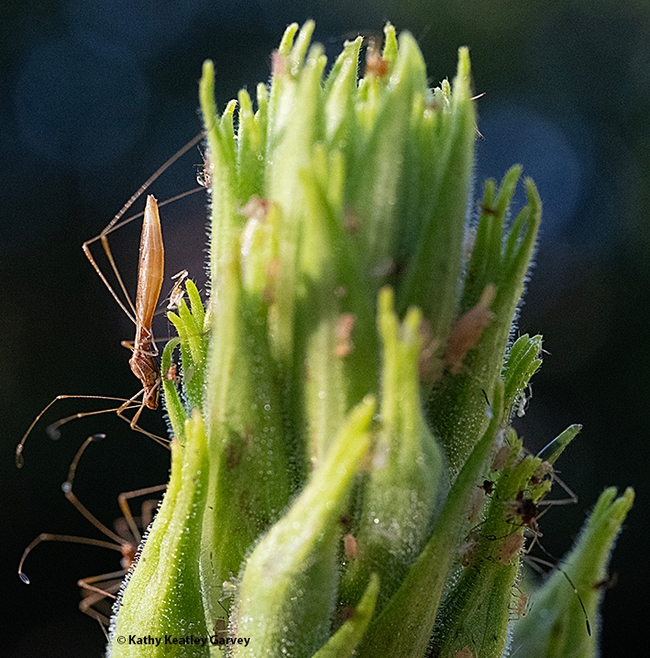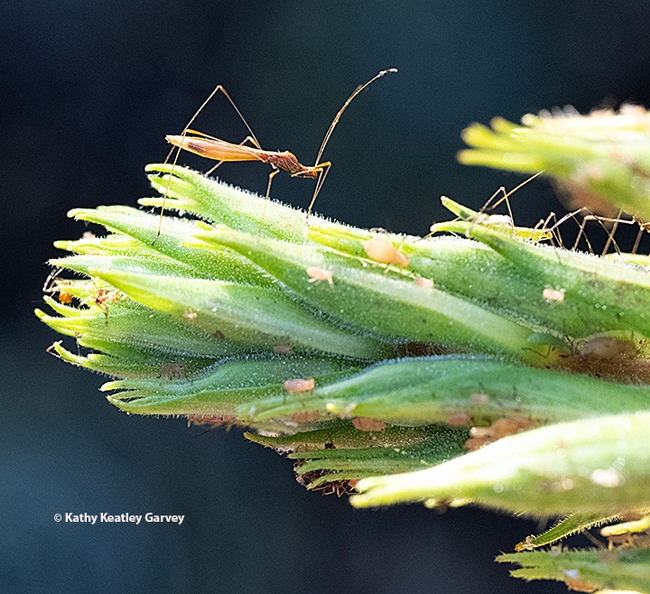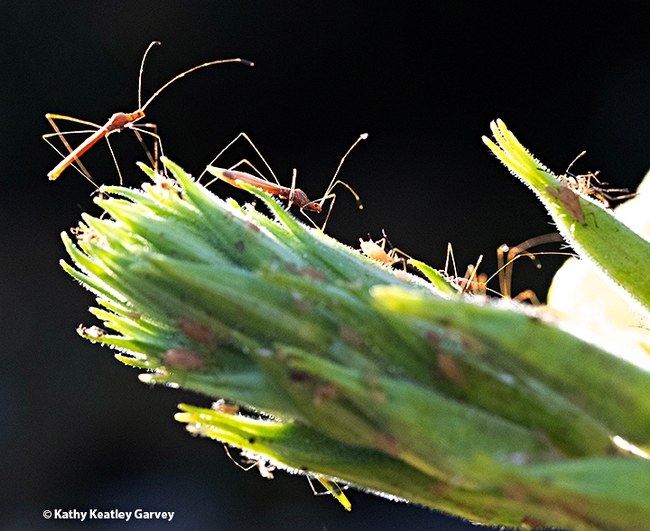
Long dangly legs, elongated body, and long, four-segmented antennae topped with a small club.
But there they were, stilt bugs, foraging on evening primrose at dawn in our "living laboratory"--a pollinator garden in Vacaville, Calif.
The "stilt walkers" belong to the family Berytidae, order Hemiptera (true bugs).
UC Davis distinguished professor Lynn Kimsey, director of the Bohart Museum of Entomology at UC Davis, confirmed that they are indeed stilt bugs.
Most stilt bugs are phytophagous, meaning they feed only on plants, but some are predaceous and feed on small insects, such as mites and aphids.
Stilt bugs are so-named because of their extremely long legs. Long legs? Check out this dorsal drawing of a stilt bug by Kathleen Schmidt of USDA's Agricultural Research Service.
Spined stilt bugs "are an occasional pest of greenhouse tomatoes that can cause flower and fruit abortion and unsightly feeding damage in mature fruits," according to Penn State Extension.
Real stilt walkers are known for their exceptional balance, agility and grace.
Their bug mimics, however, look as if they could "exceptionally" trip and fall flat on their clubbed antennae.
Attached Images:

